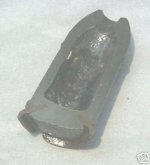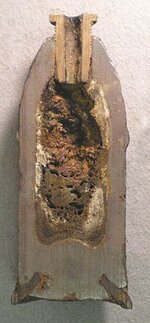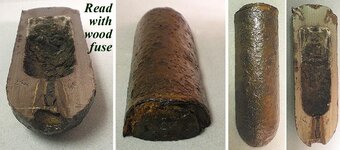alabama11
Hero Member
- Nov 23, 2015
- 910
- 1,927
- Detector(s) used
- Garrett Frontiersman, Tesoro Ciboli , Garrett AT Pro, Garrett Pin Pointer 2, Minelab Equinox 800, Panky.
- Primary Interest:
- Relic Hunting


Hello to all,
Been working the same place for 35 visits and had a low productivity day so I decided to dig the deep iron. Well the ground is a little wet so not to bad. Got this 2 lb piece of iron that has a one inch hole in the base and 3.5 inches in width and 1.5 inches in thickness. Had a greenish color when I pulled it out of the ground 1.5 feet down. The location has CW bullets and buttons and several house remains as evidence. Hope this isn't something boring to all. Thanks for viewing.


Last edited:











